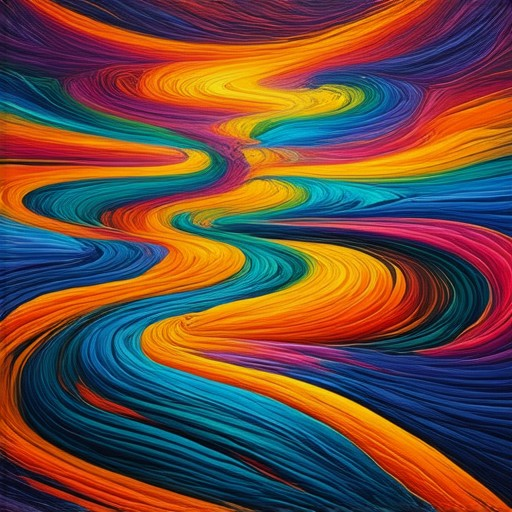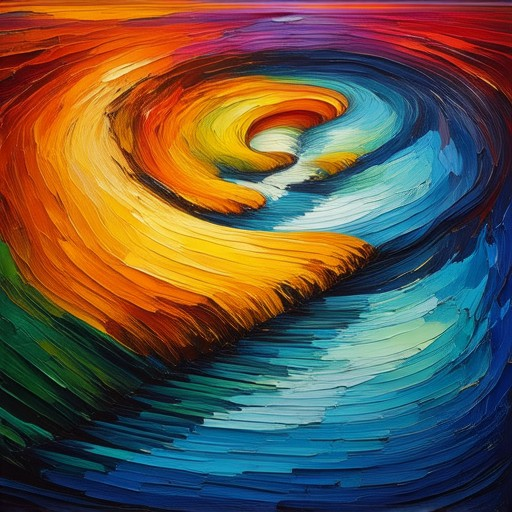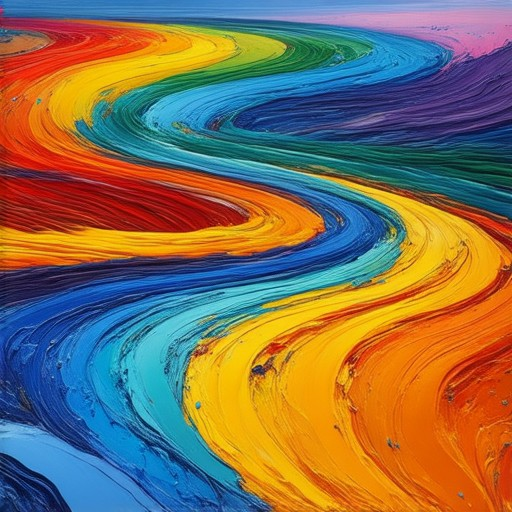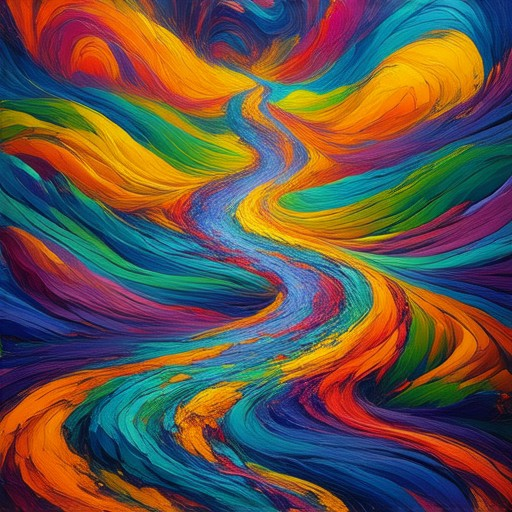Discovering the art process is a journey that combines creativity, self-discovery, and the pursuit of passion. Whether you’re an aspiring artist looking to refine your skills or a seasoned creator seeking new inspiration, understanding your art process is key to unlocking your full potential. In this comprehensive guide, we’ll explore everything you need to know about the art process, including how to make money from your art blog, uncovering your unique creative workflow, and learning from famous process artists who have redefined their craft. From mastering process art techniques to finding the right resources and tools, this article is designed to empower you to take control of your artistic journey and turn your passion into a thriving career.

What is Process Art?
Process art is a unique approach to creating art that emphasizes the journey of creation over the final product. Unlike traditional art, which often focuses on the end result, process art celebrates the steps taken to make something artistic, regardless of its appearance.
The Importance of Process Art
- Kid-Friendly Creativity: Process art is particularly engaging for children, as it allows them to explore their imaginations freely without worrying about the outcome. This fosters confidence and curiosity.
- Encourages Learning: Engaging in process art teaches problem-solving skills, hand-eye coordination, and creative thinking, making it a valuable educational tool.
- Self-Expression: Process art provides a medium for individuals to express emotions, thoughts, and experiences in a tangible way, helping people connect with their inner selves.
- Different from Traditional Art: While traditional art often seeks perfection, process art thrives on the imperfect beauty of the creation process itself.
Getting Started with Process Art
Creating your own process art is simple! Gather some basic supplies like paint, clay, or paper, and let your imagination guide you. Here are a few ideas:
- Mix colors together to see unexpected hues.
- Build shapes with blocks or other materials and then paint them.
- Collage found objects to create a unique composition.
- Sculpt with sand or playdough, focusing on texture and form.
Remember, the most important part of process art is enjoying the experience. Embrace the mess, celebrate the mistakes, and relish in the joy of creation!
Explore more artistic techniques and inspiration by visiting our Artful Journey website. Discover tutorials, resources, and insights to take your artistic journey further.
Do Art Blogs Make Money?
Yes, art blogs can definitely make money. By leveraging your passion for art and sharing it with an audience, you can build a profitable online presence. Here are some proven ways to monetize your art blog:
1. **Affiliate Marketing**: Partner with art supplies and materials companies to promote their products. Earn commissions when readers purchase items through your affiliate links.
2. **Sponsored Content**: Collaborate with art brands or galleries to create sponsored posts. Share your honest thoughts on their products or events, and get paid for your content.
3. **Digital Products**: Sell downloadable art prints, brushes, or templates directly from your blog. Offer exclusive content that fans can access in return for payment.
4. **Courses and Tutorials**: Create in-depth courses or tutorials on topics like digital art, oil painting, or watercolor. Host these on platforms like Udemy or your own website, linked from your blog.
5. **Ad Revenue**: Join ad networks like Google AdSense or Ezoic to display ads on your blog. As your traffic grows, your earnings can increase significantly.
6. **Merchandise**: Design and sell custom art-inspired merchandise such as t-shirts, stickers, and posters. Platforms like Redbubble or Teespring can help you reach a wider audience.
7. **Consulting and Coaching**: Offer one-on-one coaching or consulting services to aspiring artists. Share your expertise and charge for your time and knowledge.
8. **Subscription Models**: Create a premium membership area on your blog where subscribers receive exclusive content, behind-the-scenes looks, and early access to new artwork.
9. **Partnerships with Galleries**: Partner with local or online galleries to feature your work. Write about their exhibitions or curate shows on your blog, earning fees for your contributions.
10. **Crowdfunding**: Engage your audience on platforms like Patreon or Kickstarter to fund your art projects. Offer rewards like exclusive content or physical art pieces in return for contributions.
By combining these strategies, you can turn your art blog into a sustainable income source while connecting with like-minded individuals who appreciate your creativity. Remember to focus on high-quality content, consistent posting, and building a strong community to maximize your blog’s potential.

How to Find Your Art Process
Discovering your art process is a journey of self-discovery and exploration. Here’s a structured approach to help you uncover your unique artistic style:
- Explore Different Art Forms : Begin by experimenting with various mediums such as painting, drawing, digital art, or sculpture. Visit local art supply stores or online platforms to discover new techniques and gain inspiration.
- Document Your Work : Keep a sketchbook or journal to record your ideas, experiments, and completed works. This helps track your progress and evolution over time.
- Seek Inspiration : Surround yourself with diverse art styles by visiting museums, galleries, or attending art fairs. Alternatively, explore art books, online tutorials, and videos to broaden your exposure.
- Analyze Past Work : Review your previous pieces to identify recurring themes, color palettes, and techniques. This analysis can reveal patterns in your artistic process.
- Reflect on Motivations : Reflect on why you create art. Determine if it’s for personal expression, storytelling, or as an escape from reality. Understanding your motivations can clarify your purpose.
- Engage with Communities : Join art groups, forums, or follow artists on social media to gain new perspectives and techniques. Start with observing others’ workflows and styles.
- Practice Regularly : Establish a consistent routine, even if brief, to develop discipline and creativity. Integrate art into your daily life to foster a natural creative flow.
- Seek Feedback : Share your work with trusted friends or join critique groups for constructive criticism. This can provide valuable insights and encourage growth.
- Stay Curious and Open-Minded : Approach artmaking with curiosity and openness. Embrace experimentation and view mistakes as opportunities for learning and growth.
By following these steps, you’ll navigate your artistic journey with confidence and clarity, ultimately defining your unique art process.

What is the Concept of Process Art?
Process art refers to a conceptual approach in art where the creation process itself is considered integral to the artwork. This concept emerged in the mid-20th century, particularly associated with artists like Robert Morris, who emphasized the importance of process over the finished object. The idea behind process art is that the journey or methodology of creating the work becomes as significant as the final product.
Evolution of Process Art
Process art has evolved over time, influenced by various artistic movements:
- Abstract Expressionism : Artists focused on the act of painting, emphasizing gesture and spontaneity.
- Minimalism : Artists shifted attention to industrial materials and simple forms, often prioritizing the process of reduction.
- Conceptual Art : Artists began exploring ideas and systems, often documenting the process rather than the traditional artwork.
Key Characteristics of Process Art
Process art is defined by several distinct features:- Time-Based : The artwork often depends on temporal elements, such as duration or sequential actions.- Material-Based : The choice of materials plays a crucial role in the artistic expression.- Documentation : Recordings, photographs, or films are frequently used to capture the process.- Emphasis on Process : The artist’s technique and methodology take precedence over the conventional aesthetic.
Examples of Process Art
Examples of process art include:- Robert Morris ‘s “Anti-Matter” series, which focuses on the manipulation of materials.- Agnes Martin ‘s paintings, which highlight the deliberate, repetitive process of creation.- Eva Hesse ‘s sculptures, which explore the interaction between organic shapes and industrial materials.
Impact on Contemporary Art
Process art continues to influence contemporary art practices, inspiring artists to experiment with new techniques and challenge traditional norms. Its emphasis on the creative journey encourages viewers to engage with the artwork on a deeper level, appreciating the effort and thought behind it.
For further exploration of process art, visit our process art definitions and delve into its rich history at this dedicated page .
What is the Concept Art Process?
The concept art process is a vital step in creating visual designs, serving as the foundation for bringing ideas to life. This process typically involves several stages aimed at refining and presenting creative concepts effectively.
Here’s a breakdown of the concept art process:
- Purpose of Concept Art: The primary goal is to visually communicate ideas and guide the development of a project, whether it’s for a film, video game, product design, or marketing campaign.
- Brainstorming Phase: This initial stage involves gathering and exploring creative ideas. Artists and designers collaborate to generate a variety of concepts that align with the project’s objectives.
- Sketching and Concept Development: Skilled artists translate these ideas into rough sketches or concept images. These visuals help convey the overall direction and style of the project.
- Refinement and Iteration: Concepts are refined based on feedback from stakeholders, team members, and clients. This iterative process ensures that the ideas evolve into something more polished and effective.
- Presentational Phase: Once the concepts are developed, they are presented to stakeholders or clients. This step is crucial for gaining approval and making necessary adjustments.
- Finalization: After receiving feedback and making adjustments, the concept art is finalized. This serves as the blueprint for further development of the project.
The concept art process emphasizes collaboration, creativity, and adaptability, ensuring that the final product meets the project’s goals and expectations.

Famous Process Artists
Process art emerged in the mid-1960s as a reaction against Minimalism, focusing on the artistic production process and the traces left behind. Key figures include:
- Richard Serra – Known for his large-scale sculptures that reveal the fabrication process, often incorporating industrial materials.
- Robert Morris – A prominent figure who explored the idea of documentation in art, influencing the movement’s direction.
- Lynda Benglis – Her work often incorporated organic, evolving forms that reflected her material-based approach.
- Eva Hesse – Her sculptures blended organic and industrial elements, emphasizing the process of creation.
The movement continues to evolve, with organizations like Artsy and Rhizome supporting contemporary process art through exhibitions and digital platforms.
These artists challenge traditional notions of finished works, instead highlighting the creative journey and materials used. Their influence remains significant in contemporary art discussions.




0 Comments